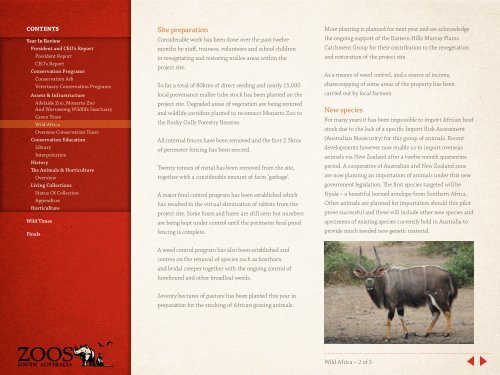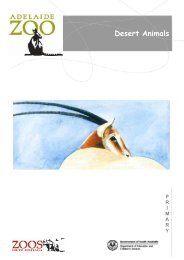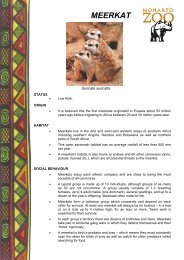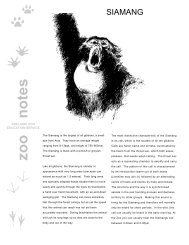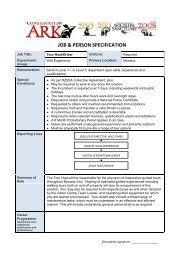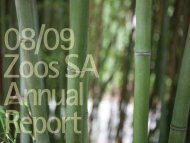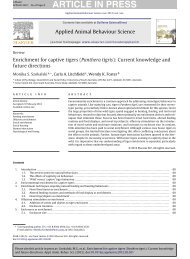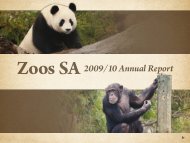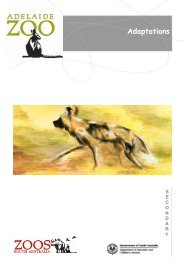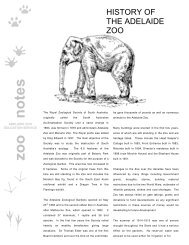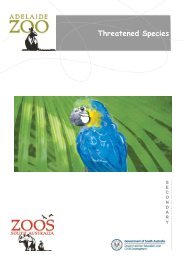2010 - 2011 Annual Report - Zoos South Australia
2010 - 2011 Annual Report - Zoos South Australia
2010 - 2011 Annual Report - Zoos South Australia
Create successful ePaper yourself
Turn your PDF publications into a flip-book with our unique Google optimized e-Paper software.
CONTENTSYear In ReviewPresident and CEO’s <strong>Report</strong>President <strong>Report</strong>CEO’s <strong>Report</strong>Conservation ProgramsConservation ArkVeterinary Conservation ProgramsAssets & InfrastructureAdelaide Zoo, Monarto ZooAnd Warrawong Wildlife SanctuaryGreen TeamWild AfricaOverseas Conservation ToursConservation EducationLibraryInterpretationHistoryThe Animals & HorticultureOverviewLiving CollectionsStatus Of CollectionAppendicesHorticultureWild TimesFinalsSite preparationConsiderable work has been done over the past twelvemonths by staff, trainees, volunteers and school childrenin revegetating and restoring mallee areas within theproject site.So far a total of 80kms of direct seeding and nearly 15,000local provenance mallee tube stock has been planted on theproject site. Degraded areas of vegetation are being restoredand wildlife corridors planted to reconnect Monarto Zoo tothe Rocky Gully Forestry Reserve.All internal fences have been removed and the first 2.5kmsof perimeter fencing has been erected.Twenty tonnes of metal has been removed from the site,together with a considerable amount of farm ‘garbage’.A major feral control program has been established whichhas resulted in the virtual elimination of rabbits from theproject site. Some foxes and hares are still seen but numbersare being kept under control until the perimeter feral prooffencing is complete.More planting is planned for next year and we acknowledgethe ongoing support of the Eastern Hills Murray PlainsCatchment Group for their contribution to the revegetationand restoration of the project site.As a means of weed control, and a source of income,sharecropping of some areas of the property has beencarried out by local farmers.New speciesFor many years it has been impossible to import African hoofstock due to the lack of a specific Import Risk Assessment(<strong>Australia</strong>n Biosecurity) for this group of animals. Recentdevelopments however now enable us to import overseasanimals via New Zealand after a twelve month quarantineperiod. A cooperative of <strong>Australia</strong>n and New Zealand zoosare now planning an importation of animals under this newgovernment legislation. The first species targeted will beNyala – a beautiful horned antelope from <strong>South</strong>ern Africa.Other animals are planned for importation should this pilotprove successful and these will include other new species andspecimens of existing species currently held in <strong>Australia</strong> toprovide much needed new genetic material.A weed control program has also been established andcentres on the removal of species such as boxthornand bridal creeper together with the ongoing control ofhorehound and other broadleaf weeds.Seventy hectares of pasture has been planted this year inpreparation for the stocking of African grazing animals.Wild Africa – 2 of 5


